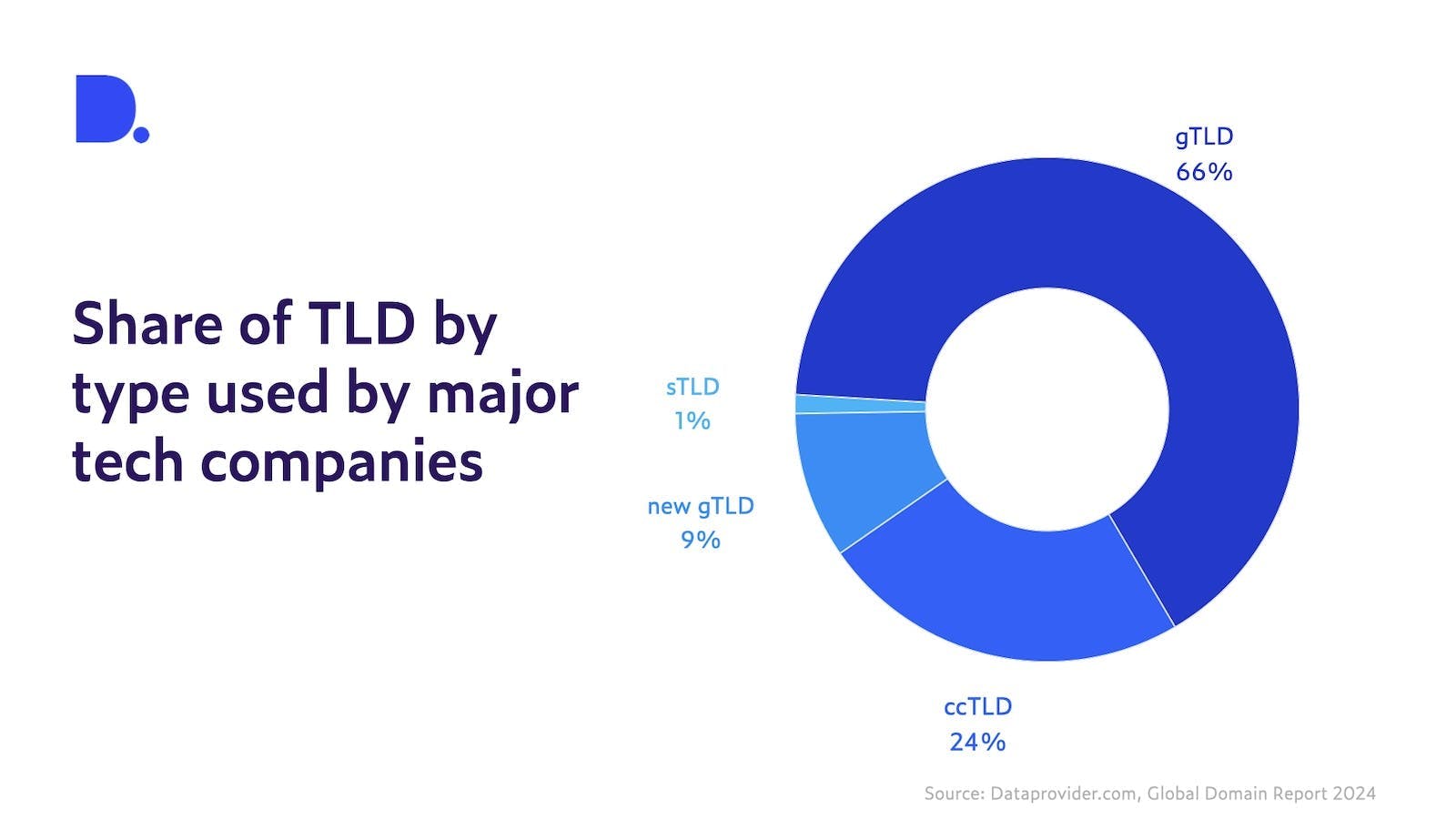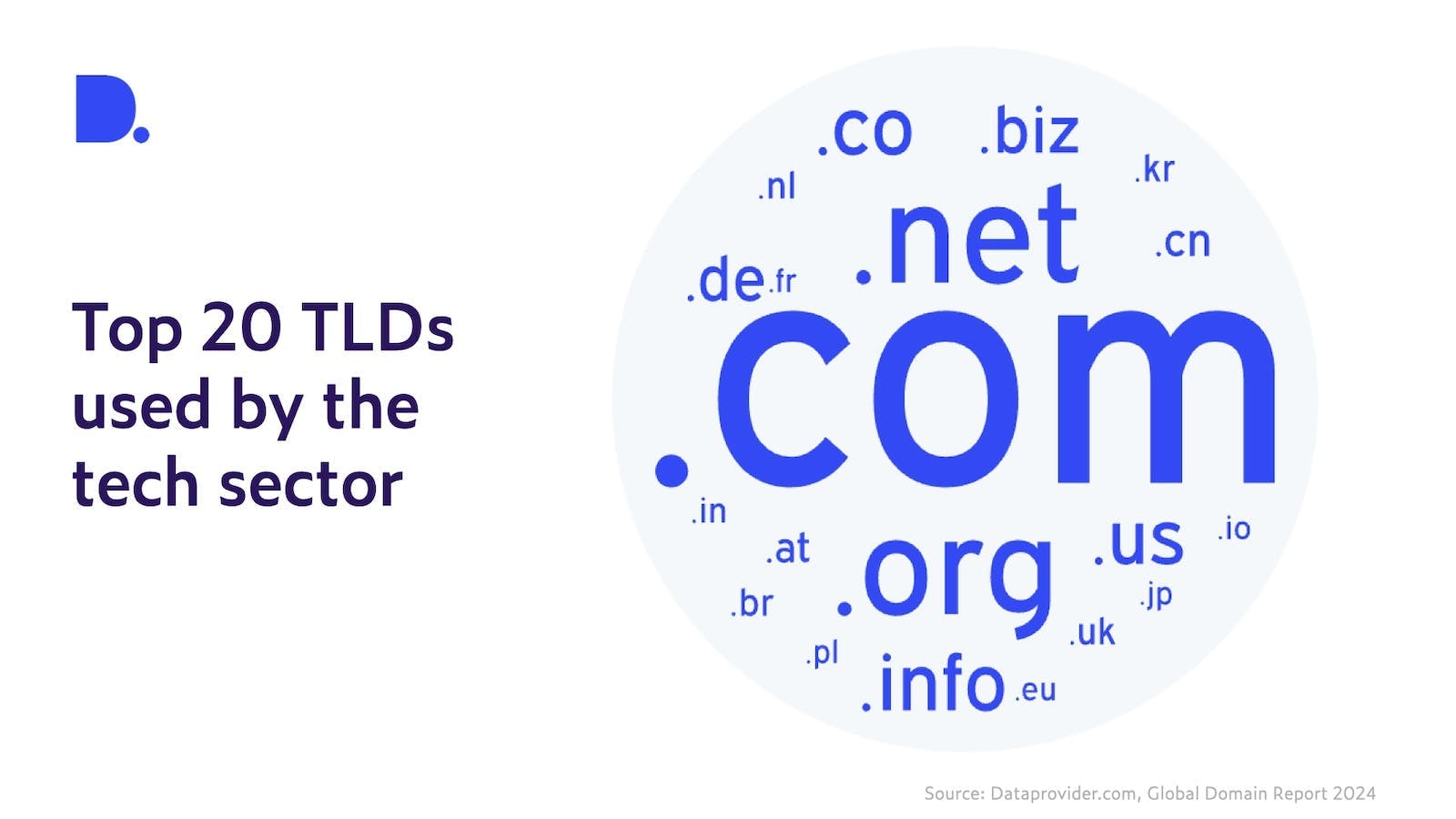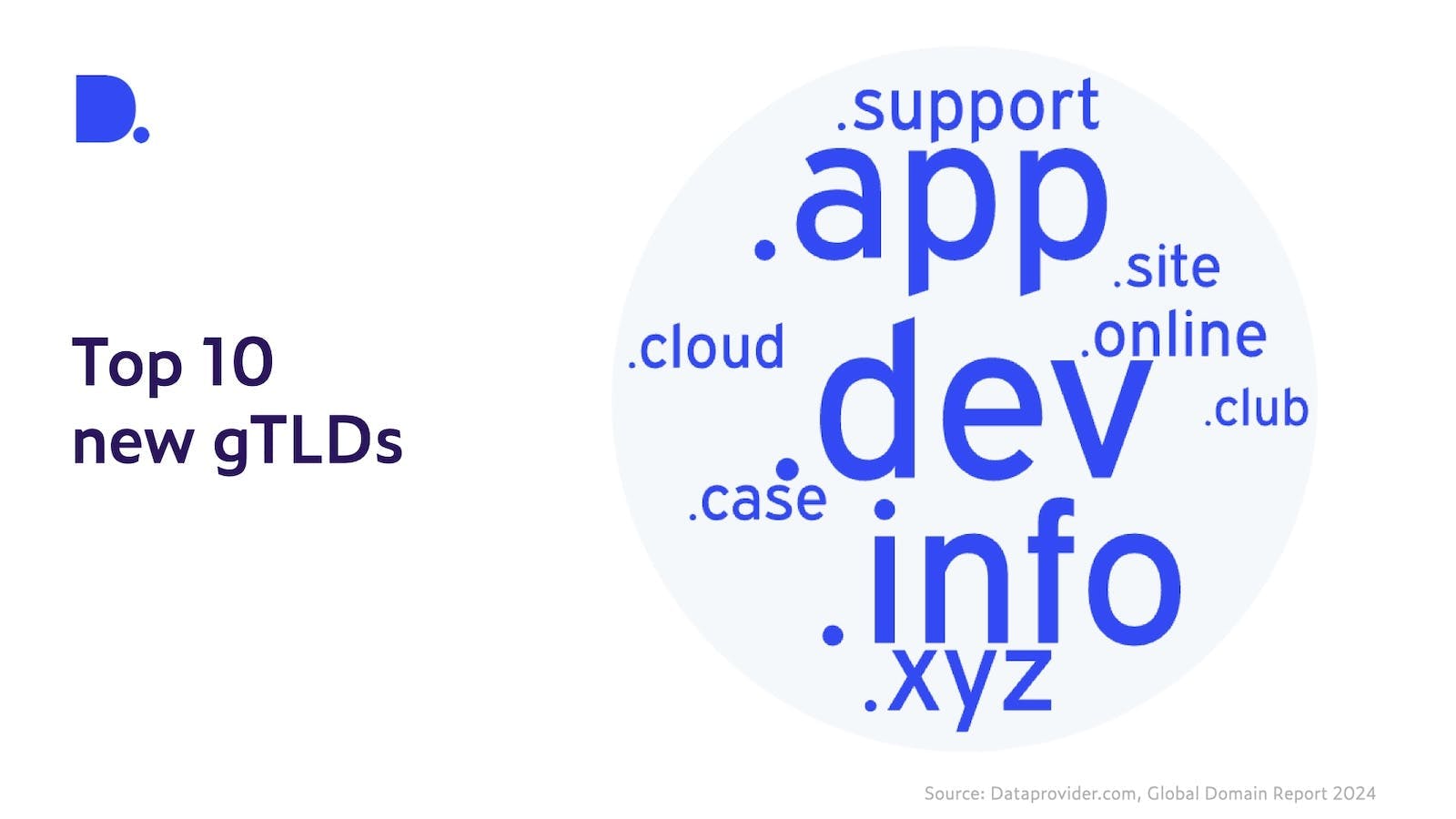The strategic use of TLDs by leading tech firms
- about 1 year ago
- 4 min read
The tech industry continues to drive global innovation and economic growth in 2024. This sector, comprising companies that innovate, produce, and distribute various technology-based goods and services, shape the current digital landscape. It extends across a wide range, encompassing software development, hardware manufacturing, electronics, internet utilities, artificial intelligence, and more. The impact of this sector on the gross domestic product (GDP) and broader economy of several nations is substantial.
However, in an industry that thrives on cutting-edge innovation and fierce competition, the significance of online identity cannot be overstated. For tech firms and start-ups, a domain name is not merely a digital address but a strategic asset that is crucial for brand recognition, cybersecurity and market positioning.
Drawing on key findings from the Global Domain Report 2024, for which Dataprovider.com served as one of the primary sources, we’ll unravel how the tech industry navigates the usage of TLDs. We shed light on the strategic schemes that underpin successful online identities in the tech industry, highlighted in the Global Domain Report 2024 released by InterNetX and Sedo.

How do you analyze the tech sector's use of TLDs?
As we zoomed in on the domain strategies employed by tech firms, we focused on a curated selection that exemplifies industry leadership and influence. The Forbes Top 10 Tech Companies of 2023 provided a focused lens through which we could examine the biggest tech companies worldwide.
We followed a rigorous, data-centric methodology to assess how these tech giants use TLDs. Data experts at Dataprovider.com began by identifying each company's primary domain. We then employed an advanced tool from Dataprovider.com, the Ownership feature, which reliably verifies domain ownership. It takes into account various indicators, such as WHOIS data, DNS records, contact information and company registration details on websites. After compiling this information, a probability score is calculated that reflects the likelihood of a domain being owned by the same company.
The effectiveness of this score depends in part on the consistent accuracy of the data provided by tech companies. Therefore, companies should maintain consistent records across all digital properties, ensuring that domain registration and business operations data are kept up to date.
The landscape of TLDs in the tech sector
Despite the expansive selection of TLDs, the biggest tech companies still prefer using the well-known generic top-level domains (gTLDs). With a chunky 65.6% share, these gTLDs dominate the domain market in the tech industry, with the .com domain extension being the most popular. According to the Global Domain Report 2024, .com asserts its dominance with an impressive 159.6 million registered domains, albeit with a modest 0.6% year-over-year (YoY) contraction. This prompts intriguing speculation regarding the potential decline of .com's stronghold after two decades of domination.

In the tech industry, ccTLDs currently hold a 23.8% market share. This indicates a smaller representation than the overall domain market, where ccTLDs typically hold a 30-40% share. Leading tech firms mostly operate in different countries and regions, so they secure domains under ccTLDs to target specific regions and offer a localized presence and multilingual websites. Using a mix of traditional TLDs, ccTLDs for a localized presence, and targeted new gTLDs, the tech industry is creating its online presence and reaching customers in different areas.
Top 20 TLDs in the tech industry
In the vibrant landscape of the tech industry, it’s no surprise that the .com TLD continues to reign supreme, dominating the market with its universal appeal and recognition factor. The legacy TLDs .org and .net follow. The list expands to include ccTLDs from the world's largest economies across Europe and Asia, reflecting the global nature of the tech industry.

Notably, the American ccTLD .us makes a surprising appearance despite its low profile in the broader domain market. With 2 million registered domains in 2024 and a 3.9% YoY growth, .us showcases a quietly growing interest within tech circles, hinting at a nuanced shift in domain registration trends. And the popular ccTLD .io also takes a place among the top 20 TLDs due to its connotation with input/output.
The strategic adoption of new gTLDs by leading tech firms
The acceptance of new gTLDs has increased in the past few years. In particular, tech-related new gTLDs have gained traction among the globe's most prominent tech firms. These include TLDs like .dev, .app, .xyz, and .support. The leader of the pack over recent years has been .xyz, known for its tech-centric appeal and versatility. This new gTLD recently made headway by engaging with burgeoning communities such as blockchain, Web3 and crypto. As per the Global Domain Report 2024, around 3.8 million .xyz domain names have been registered.

This diverse spectrum of new gTLDs presents several strategic advantages for tech companies. It enables them to bolster their brand protection strategies, forge a broader online identity and mitigate the threat of cybersquatting. Additionally, new gTLDs facilitate the alignment of different brands or products within the same organization and amplify the efficacy of targeting specific regional markets.
Navigating the domain industry one TLD at a time
In the ever-evolving world of technology, in which innovation leads and the market follows, understanding the intricacies between tech companies and their domain strategies delivers a number of insights. As we've delved into the strategic utilization of TLDs by leading tech firms, it becomes apparent that the choices made in this area carry weight in branding, cybersecurity and market dominance.
Despite the plethora of options available, the tech industry's choice of legacy gTLDs speaks to a nuanced strategy of balancing innovation with the recognized trust-building power of established TLDs. Meanwhile, the growing adoption of new gTLDs highlights a forward-thinking approach, leveraging these domains for brand protection, identity expansion, and market-specific targeting.
The Global Domain Report 2024, enriched with data from InterNetX and Sedo, provides additional information for those seeking to further understand the strategies and their implications in the broader tech industry landscape. You can download the full report here: Global Domain Report 2024

This blog post was written by Simone Catania, who currently serves InterNetX as Global Content and Communications Manager. He is responsible for the content across InterNetX's blog and other channels and helps users understand the underpinning mechanisms behind the internet. Simone is an ICANN fellow and a member of EURALO and UASG.